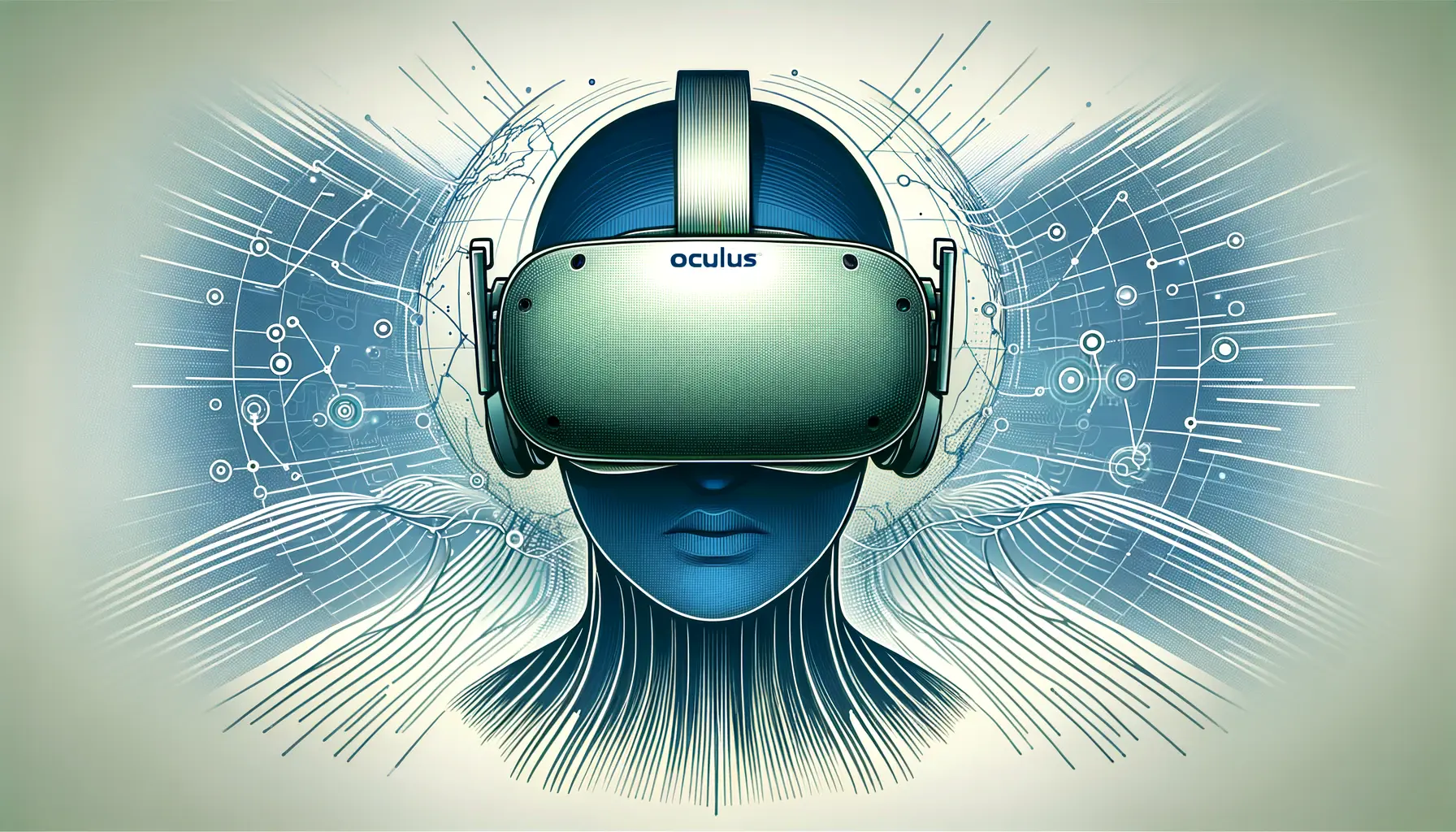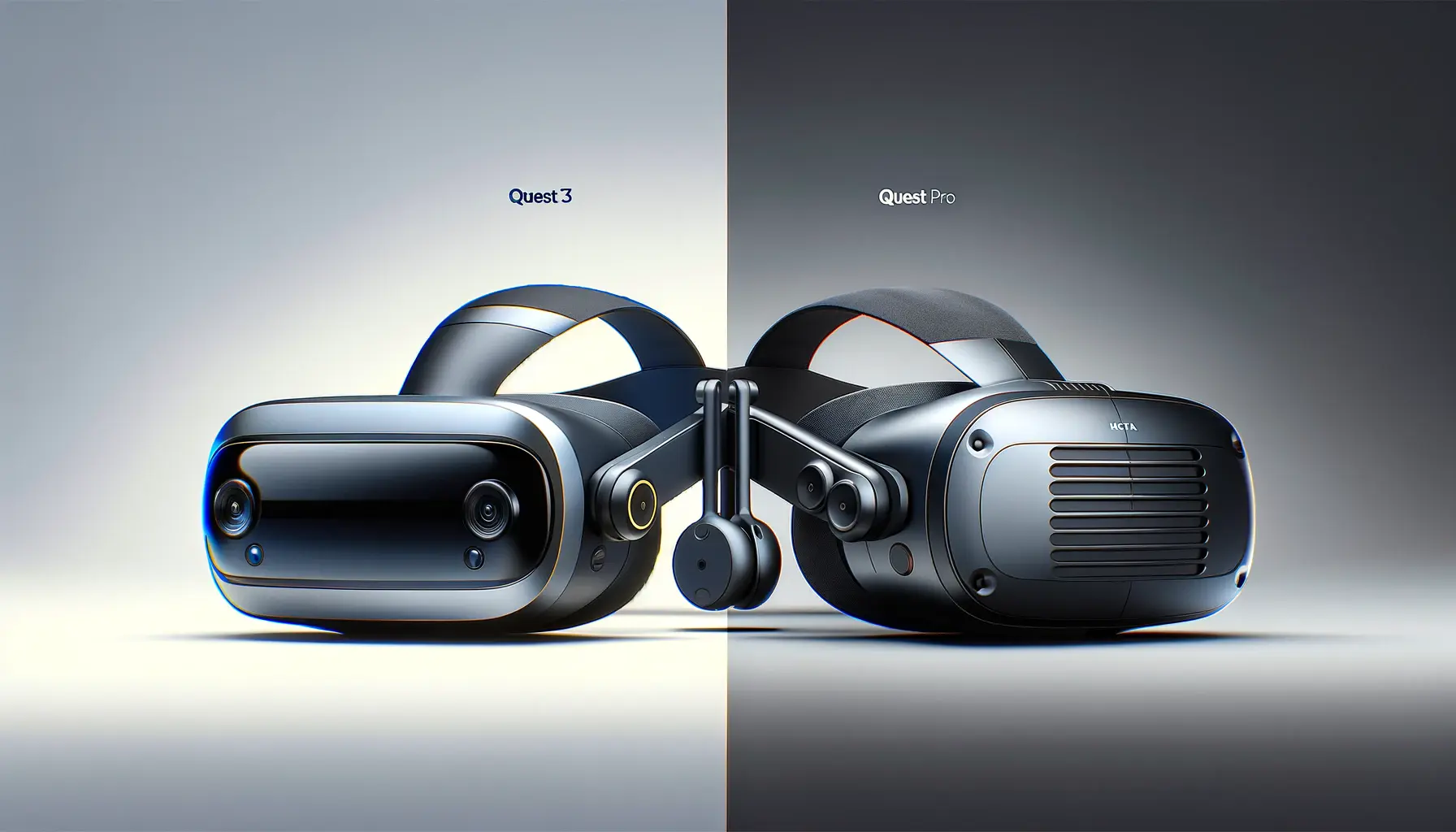The advent of virtual reality (VR) technology has revolutionized the way we interact with digital content, offering immersive experiences that were once the stuff of science fiction.
Among the forefront of this revolution is the Meta Quest 3, a device that not only promises unparalleled VR experiences but also introduces innovative streaming capabilities.
This article delves into the world of Quest 3 streaming, exploring how it enhances live VR experiences and what it means for users and content creators alike.
Streaming on the Quest 3 is not just about broadcasting a game or an experience; it’s about sharing a piece of a virtually constructed reality with the world.
This capability transforms the VR headset from a solitary experience into a communal one, allowing users to connect with audiences in real-time.
Whether it’s for gaming, educational purposes, or virtual meetups, the Quest 3’s streaming functionality is a game-changer in how we perceive and interact with VR content.
- Understanding Quest 3 Streaming
- Exploring the Technical Aspects
- Enhancing Viewer Engagement
- Challenges and Solutions in VR Streaming
- Monetizing VR Streaming
- Future Trends in VR Streaming
- Building a Community Around VR Streaming
- Embracing the Future of VR Streaming with Quest 3
- Quest 3 Streaming: Frequently Asked Questions
Understanding Quest 3 Streaming
The Quest 3’s streaming feature is designed with simplicity and accessibility in mind, enabling users to live stream their VR experiences directly to popular platforms such as YouTube, Twitch, and Facebook.
This functionality opens up new avenues for VR enthusiasts to share their adventures, tutorials, and reactions with a broader audience, making VR more accessible and understandable to the general public.
Moreover, the Quest 3’s advanced hardware and software optimizations ensure that streaming is smooth and of high quality, providing viewers with a clear and engaging view of the user’s VR world.
This is crucial for maintaining viewer engagement and ensuring that the essence of the VR experience is not lost in translation.
Setting Up for Streaming
Setting up streaming on the Quest 3 is a straightforward process, designed to be user-friendly and quick.
Users can initiate a live stream directly from the universal menu within the headset, choosing their preferred streaming platform and adjusting settings such as stream quality and audience.
This ease of setup means that even those new to VR or streaming can start sharing their experiences with minimal hassle.
Additionally, the Quest 3 offers various tools and features to enhance the streaming experience.
These include customizable overlays, audience interaction features, and the ability to include webcam footage for a picture-in-picture effect, adding a personal touch to streams and increasing viewer engagement.
The Quest 3’s streaming capability democratizes VR content creation, making it accessible to a wider audience and encouraging the growth of a vibrant VR community.
Benefits for Content Creators
For content creators, the Quest 3’s streaming functionality is a boon.
It provides a new medium to explore and create content, offering unique opportunities to engage with audiences in immersive ways.
Creators can take viewers on virtual tours, conduct live VR events, or showcase VR gameplay, all while interacting with their audience in real-time.
This capability not only enriches the content creator’s toolkit but also fosters a deeper connection with their audience.
Viewers can experience the creator’s virtual world as if they were there, creating a shared experience that enhances community building and loyalty.
Exploring the Technical Aspects
The Quest 3’s streaming capability is underpinned by robust technical features that ensure a seamless and high-quality streaming experience.
From hardware acceleration to software optimizations, the Quest 3 is designed to handle the demands of live VR streaming efficiently.
Let’s delve into some of these technical aspects that make streaming on the Quest 3 a standout feature.
Hardware Capabilities
The Quest 3 is equipped with advanced hardware that is specifically optimized for VR experiences and streaming.
This includes:
- A powerful processor that ensures smooth gameplay and streaming, minimizing latency and buffering issues.
- High-resolution displays that provide clear and vivid images, crucial for an immersive VR experience and high-quality stream output.
- Integrated Wi-Fi 6 support, offering faster and more reliable internet connections for uninterrupted streaming.
These hardware advancements not only enhance the VR experience for the user but also ensure that the streamed content is of the highest quality, making it more enjoyable for viewers.
Software Optimizations
Alongside its impressive hardware, the Quest 3 boasts software optimizations that further enhance the streaming experience:
- Streamlined integration with popular streaming platforms, allowing for easy setup and customization of live streams.
- Adaptive bitrate streaming, which adjusts the stream quality in real-time based on the user’s internet speed, ensuring the best possible viewer experience under varying network conditions.
- Advanced encoding techniques that reduce the load on the Quest 3’s processor, ensuring smooth gameplay and streaming simultaneously.
These software features are crucial for maintaining the balance between providing a high-quality VR experience to the user and a smooth, high-definition stream to the audience.
The combination of powerful hardware and sophisticated software makes the Quest 3 an ideal platform for streaming VR content, offering both creators and viewers a superior experience.
Impact on Streaming Quality
The technical capabilities of the Quest 3 have a direct impact on the quality of streaming.
High-resolution displays and powerful processing capabilities ensure that the content captured for streaming is crisp and fluid, capturing the nuances of VR environments and actions.
Furthermore, the adaptive bitrate streaming and advanced encoding techniques ensure that this quality is maintained throughout the streaming process, regardless of network fluctuations.
For streamers, this means being able to broadcast VR content that is both visually impressive and engaging, helping to attract and retain viewers.
For viewers, it means enjoying VR content that is as close to the real experience as possible, even if they don’t own a VR headset themselves.
Enhancing Viewer Engagement
The Quest 3’s streaming capabilities are not just about sharing content; they’re also about creating interactive and engaging experiences for viewers.
Through various features and tools, streamers can interact with their audience in real-time, making the VR streaming experience more dynamic and personal.
Interactive Features for Streams
Interactive features play a crucial role in enhancing viewer engagement during live VR streams.
The Quest 3 supports several such features, including:
- Live chat integration, allowing viewers to communicate with the streamer and each other during the stream.
- Viewer polls and Q&A sessions, enabling streamers to gather feedback and answer questions in real-time.
- Virtual reality “events” where viewers can join the streamer in a VR environment, offering an unprecedented level of interaction.
These interactive elements not only make the stream more engaging for viewers but also help build a sense of community around the streamer’s content.
Customization and Personalization
Customization and personalization are key to standing out in the crowded streaming space.
The Quest 3 offers various options for streamers to customize their streams, including:
- Custom overlays and graphics that can be added to the stream to enhance its visual appeal.
- Personalized avatars for streamers, allowing them to present themselves in unique and creative ways.
- Scene transitions and effects that can be used to add polish and professionalism to the stream.
These customization options not only improve the aesthetic quality of the stream but also allow streamers to express their personality and brand, making their content more memorable to viewers.
Incorporating interactive features and customization options into VR streams can significantly enhance viewer engagement, turning passive viewers into active participants in the VR experience.
Case Studies: Successful VR Streams
Several streamers have leveraged the Quest 3’s streaming capabilities to great effect, creating engaging and interactive VR streams that have attracted large audiences.
For example, a streamer hosting live VR art sessions has used the Quest 3’s high-quality streaming and interactive features to create a collaborative art-making environment, engaging viewers by allowing them to suggest ideas and give feedback in real-time.
Another streamer has utilized the Quest 3’s capabilities to host virtual reality game tournaments, with live commentary and viewer participation through polls and chat.
These streams have not only showcased the potential of VR gaming but have also created a lively and interactive community around the streamer’s content.
Challenges and Solutions in VR Streaming
While streaming from the Quest 3 offers numerous opportunities for engagement and creativity, it also presents unique challenges.
These challenges range from technical issues to content creation hurdles.
However, with every challenge comes a solution, and understanding these can help streamers optimize their VR streaming experience.
Technical Challenges and Troubleshooting
One of the primary challenges faced by VR streamers is managing the technical complexities of streaming high-quality VR content.
Issues such as latency, bandwidth limitations, and hardware compatibility can affect the streaming quality.
Solutions to these challenges include:
- Ensuring a stable and high-speed internet connection to minimize latency and buffering.
- Using wired connections where possible to improve the stability and speed of the internet connection.
- Regularly updating the Quest 3 firmware and streaming software to ensure compatibility and access to the latest features and optimizations.
By addressing these technical challenges, streamers can significantly improve the quality and reliability of their VR streams.
Content Creation in VR
Creating engaging content in VR is another challenge, as it requires a different approach compared to traditional streaming.
VR content needs to be immersive and interactive to captivate viewers.
Streamers can overcome this challenge by:
- Exploring various VR games, experiences, and applications to provide diverse content that appeals to a wide audience.
- Incorporating viewer suggestions and feedback into the content creation process to create more engaging and personalized experiences.
- Collaborating with other VR content creators to share ideas, co-host streams, and cross-promote content to expand their viewer base.
These strategies can help streamers navigate the complexities of VR content creation and develop streams that resonate with their audience.
Effective troubleshooting and innovative content creation are key to overcoming the challenges of VR streaming, ensuring a high-quality and engaging experience for both streamers and viewers.
Viewer Accessibility and Inclusivity
Ensuring that VR streams are accessible and inclusive to all viewers, including those who may not have VR headsets, is crucial.
Streamers can enhance viewer accessibility by:
- Providing clear explanations and introductions to VR content for viewers who are new to the technology.
- Using picture-in-picture displays to show the streamer’s real-world actions alongside the VR gameplay, helping viewers better understand the VR experience.
- Engaging with the viewer community through chat and social media to foster a welcoming and inclusive environment.
By focusing on accessibility and inclusivity, streamers can ensure that their VR streams are enjoyable and engaging for a broad audience, regardless of their familiarity with VR technology.
Monetizing VR Streaming
As VR streaming grows in popularity, so do the opportunities for monetization.
Streamers can leverage their unique content and viewer base to generate revenue through various channels.
Understanding these monetization strategies is crucial for streamers looking to make their passion for VR streaming financially sustainable.
Subscription Models and Donations
One of the primary methods for monetizing VR streams is through subscriptions and donations.
Platforms like Twitch and YouTube offer subscription options where viewers can pay a monthly fee to support their favorite streamers.
Additionally, donations during live streams provide a direct way for viewers to show their appreciation.
Streamers can encourage subscriptions and donations by:
- Offering exclusive content, such as behind-the-scenes looks or subscriber-only streams, to subscribers.
- Creating a strong community around their VR content, fostering a sense of belonging and support among viewers.
- Recognizing and thanking subscribers and donors during streams, making them feel valued and appreciated.
These strategies not only help in monetizing the stream but also in building a loyal viewer base.
Sponsorships and Partnerships
Sponsorships and partnerships with VR game developers, hardware manufacturers, and related brands offer another lucrative monetization avenue.
Streamers can leverage their influence to promote products or services, receiving compensation in return.
To attract sponsorships, streamers should:
- Maintain a professional online presence and consistently produce high-quality VR content.
- Understand their audience demographics and interests to align with potential sponsors.
- Reach out to brands with a well-prepared pitch, showcasing their reach and the benefits of partnering with them.
Effective sponsorships and partnerships not only provide financial benefits but also enhance the stream’s credibility and appeal.
Diversifying revenue streams through subscriptions, donations, sponsorships, and partnerships is key to a successful monetization strategy for VR streamers.
Affiliate Marketing
Affiliate marketing is another viable strategy for monetizing VR streams.
Streamers can earn commissions by promoting VR games, accessories, and other products, receiving a percentage of the sales made through their affiliate links.
To maximize earnings from affiliate marketing, streamers should:
- Select affiliate products that are relevant and appealing to their audience.
- Integrate product promotions naturally into their content, providing genuine recommendations.
- Disclose affiliate relationships to their audience, maintaining transparency and trust.
By carefully selecting and promoting affiliate products, streamers can add value to their audience while generating additional revenue.
Future Trends in VR Streaming
The landscape of VR streaming is constantly evolving, with new technologies and platforms emerging that shape the future of this exciting field.
Staying ahead of these trends is crucial for streamers looking to grow their audience and enhance their streaming experiences.
Let’s explore some of the anticipated trends in VR streaming and their potential impact on content creators and viewers alike.
Increased Interactivity and Immersion
As VR technology advances, we can expect to see even greater levels of interactivity and immersion in VR streams.
This could include more sophisticated viewer participation features, such as the ability to influence game outcomes or interact with the streamer’s virtual environment in real-time.
Enhancements in haptic feedback and motion tracking will also contribute to more immersive and engaging VR experiences, both for streamers and their audiences.
These advancements will not only make VR streams more entertaining and engaging but also open up new possibilities for creative content creation, allowing streamers to craft unique and memorable experiences for their viewers.
Wider Adoption of VR Technology
As VR headsets become more affordable and accessible, we can anticipate a wider adoption of VR technology among the general public.
This increased accessibility will likely lead to a larger audience for VR streams, as more people become interested in exploring VR content.
Streamers who are early adopters of VR streaming technology and techniques will be well-positioned to capitalize on this growing audience.
Furthermore, the expansion of the VR audience will encourage more content creators to enter the VR streaming space, leading to a richer and more diverse range of VR content available for viewers to enjoy.
Embracing the latest trends and technologies in VR streaming will be key for streamers aiming to stay relevant and competitive in this rapidly evolving field.
Integration of Augmented Reality (AR)
The integration of augmented reality (AR) with VR streaming is another trend that could significantly enhance the streaming experience.
AR technology can add an additional layer of information and visuals to VR streams, such as live stats, annotations, or even virtual audiences.
This blend of VR and AR, often referred to as mixed reality, will allow streamers to create even more engaging and informative content.
For viewers, the integration of AR could provide a more interactive and informative viewing experience, making VR streams not just about entertainment but also about learning and discovery.
Building a Community Around VR Streaming
The success of a VR streamer is not solely measured by the quality of their content or the sophistication of their streaming setup; it’s also about the strength and engagement of their community.
A dedicated community can provide support, feedback, and motivation, making it a crucial element for any streamer looking to grow their channel.
Here are strategies for building and nurturing a community around VR streaming.
Engaging with Your Audience
Engagement is the cornerstone of community building.
Streamers can foster a strong connection with their audience by:
- Responding to comments and messages, showing that they value their viewers’ input.
- Hosting Q&A sessions or community events, providing opportunities for direct interaction.
- Featuring viewer-created content or shoutouts during streams, making their community feel seen and appreciated.
These actions help create a welcoming and inclusive environment that encourages viewers to return and participate actively.
Creating Consistent and Quality Content
Consistency and quality are key to keeping the audience engaged and attracting new viewers.
Streamers should focus on:
- Establishing a regular streaming schedule, so viewers know when to tune in.
- Investing time in planning and producing high-quality VR content that stands out.
- Staying updated with the latest VR trends and games, keeping the content fresh and relevant.
By providing consistent and engaging content, streamers can build a loyal following that looks forward to their streams.
Leveraging Social Media and Platforms
Social media and other platforms play a vital role in community building.
Streamers can use these tools to:
- Promote their streams and share highlights, reaching a wider audience.
- Create a space for community interaction, such as Discord servers or Facebook groups, fostering a sense of belonging.
- Collaborate with other streamers or influencers, introducing their community to new audiences.
Effectively using social media and collaboration opportunities can significantly expand a streamer’s reach and strengthen their community.
Neglecting audience engagement and community building can hinder the growth of a VR streaming channel, regardless of the content’s quality.
Offering Exclusive Content and Perks
Offering exclusive content and perks can further enhance community loyalty and engagement.
This might include:
- Subscriber-only streams or content, providing value to those who support the channel financially.
- Giveaways or contests, rewarding community participation and support.
- Early access to videos or behind-the-scenes content, making the community feel privileged and valued.
These strategies not only incentivize viewers to join and stay within the community but also create a more engaging and rewarding experience for everyone involved.
Embracing the Future of VR Streaming with Quest 3
The journey through the realms of VR streaming, especially with the Meta Quest 3, unveils a landscape brimming with potential and opportunities.
As we’ve explored, the Quest 3 is not just a gateway to immersive gaming and experiences but also a platform for sharing these moments live with the world.
The evolution of streaming on this device reflects a broader trend towards more interactive, engaging, and community-focused digital experiences.
The Quest 3 Streaming Experience
At the heart of the Quest 3’s appeal is its ability to blend cutting-edge technology with user-friendly features, making VR streaming accessible to a wide audience.
The device’s hardware and software optimizations ensure that both streamers and viewers enjoy high-quality, seamless experiences.
From the technical prowess that powers smooth, lag-free broadcasts to the interactive features that engage audiences, the Quest 3 is at the forefront of defining the VR streaming standard.
Challenges, Solutions, and Opportunities
Despite the advancements, VR streaming on the Quest 3 is not without its challenges.
Technical hurdles, content creation complexities, and the need for audience accessibility are among the obstacles streamers navigate.
However, the solutions are as innovative as the platform itself, ranging from leveraging the latest in streaming technology to fostering inclusive and engaging community spaces.
The future of VR streaming is bright, with emerging trends like increased interactivity, wider VR adoption, and the integration of augmented reality promising to enrich the streaming landscape even further.
- Interactive and immersive streaming experiences will become the norm, driven by advancements in VR and AR technologies.
- The growing adoption of VR technology will expand the audience for VR streams, creating new opportunities for content creators.
- Community building and engagement will remain central to the success of VR streaming endeavors, emphasizing the importance of direct interaction with viewers.
In conclusion, the Quest 3’s streaming capabilities represent a significant leap forward in how we share and consume content in virtual spaces.
As technology evolves and the community around VR streaming grows, the possibilities for what can be shared, experienced, and created are boundless.
The Quest 3 is not just a tool for gaming or entertainment; it’s a platform that connects people, stories, and experiences in a deeply immersive way.
For streamers, viewers, and VR enthusiasts alike, the journey is just beginning, and it promises to be an exciting one.
Quest 3 Streaming: Frequently Asked Questions
Delve into the most common inquiries surrounding Quest 3 streaming, providing insights and clarity for enthusiasts and newcomers alike.
Yes, Netflix is accessible on Quest 3, alongside Quest, Quest 2, and Quest Pro headsets, offering a vast library of streaming content.
Streaming games from Quest 3 to PC can be achieved through Air Link or a USB cable, allowing for seamless gameplay broadcasting.
Yes, numerous online resources offer beginner guides to streaming on Quest 3, covering setup, platform integration, and tips for optimal streaming.
Absolutely, Quest 3 supports offline gaming, allowing users to download and play a variety of VR games without an internet connection.
Watching movies on Quest 3 is straightforward, with apps like Netflix and YouTube VR, or by downloading content directly to the device.
Popular platforms for Quest 3 streaming include Twitch, YouTube, and Facebook, each offering unique features for VR content broadcasting.
Yes, Quest 3 allows for streaming customization, including overlays, camera settings, and audience interaction features for a personalized experience.
Improving streaming quality on Quest 3 involves ensuring a stable internet connection, optimizing encoding settings, and using a wired connection if possible.














